Autonomous Ships
AUTONOMOUS CAPABILITY
To achieve deterrence by denial, foundational autonomous technologies must be developed and matured domestically to deliver an asymmetric and resilient warfighting capability.
The integration of technology which strategically enables autonomy is one of Austal's research and development focus areas.
Traditionally vessel operations are assured through crew functions including control, maintenance and decision-making activities. Uncrewed systems, must provide the same level of assurance through other means.
Austal has developed hardware and software frameworks which provide equivalent capability in lieu of traditional crew functions.
Key optionally crewed and autonomous assurance frameworks:
- Systems Framework
A design framework used to eliminate systems or reduce crew-system interactions, enabling desired levels of platform autonomy.
- Maintenance Framework
Optimising fleet maintenance and availability through advanced data-driven prognostics, assuring seaworthy operation of the surface fleet.
- Crew Advisory Framework
Supporting decision making and planning of crewed and uncrewed operation.
VANTAGE
Austal's Vantage vessels, available in 25 and 55 metre variants, have been developed from the keel up as autonomy-ready platforms. Both offer flexible payloads with containerised TEU/FEU interfaces, and can be controlled by optional crews,remotely (from ship or shore) or via their fully autonomous systems.
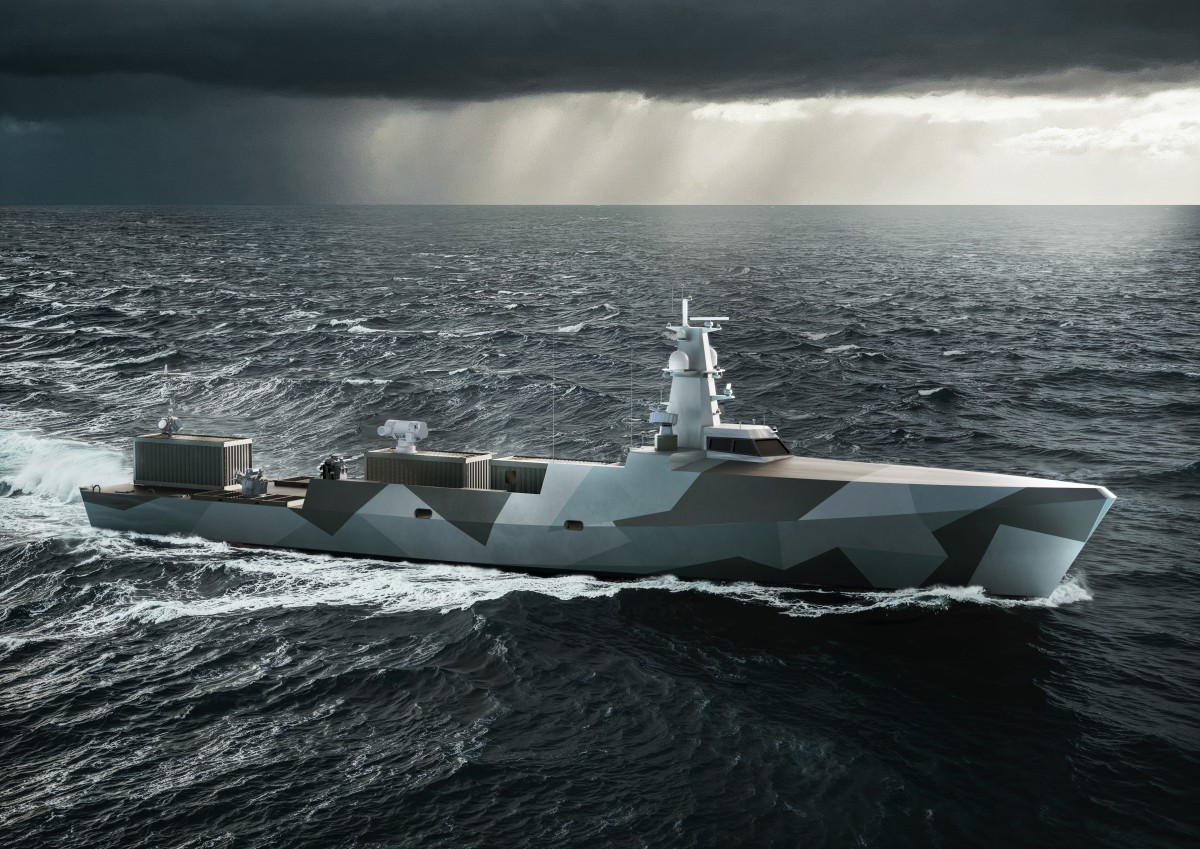
Above: VANTAGE 55 is a flexible, long range autonomy-ready platform delivering persistent awareness and distributed lethality with low personnel demand.
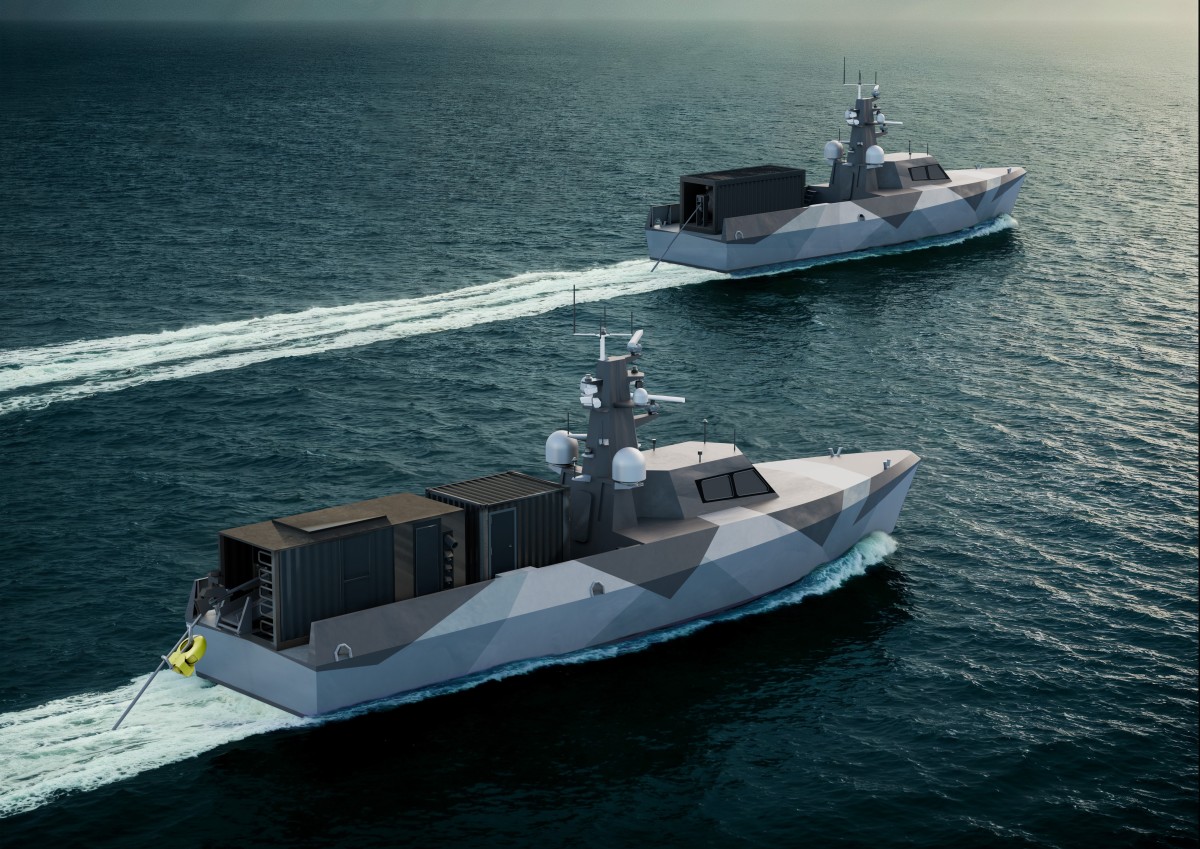
Above: VANTAGE 25 is a scalable and affordable autonomy-ready platform delivering distributed presence with low personnel demand.
For further information on VANTAGE please download the datasheet.
AROS
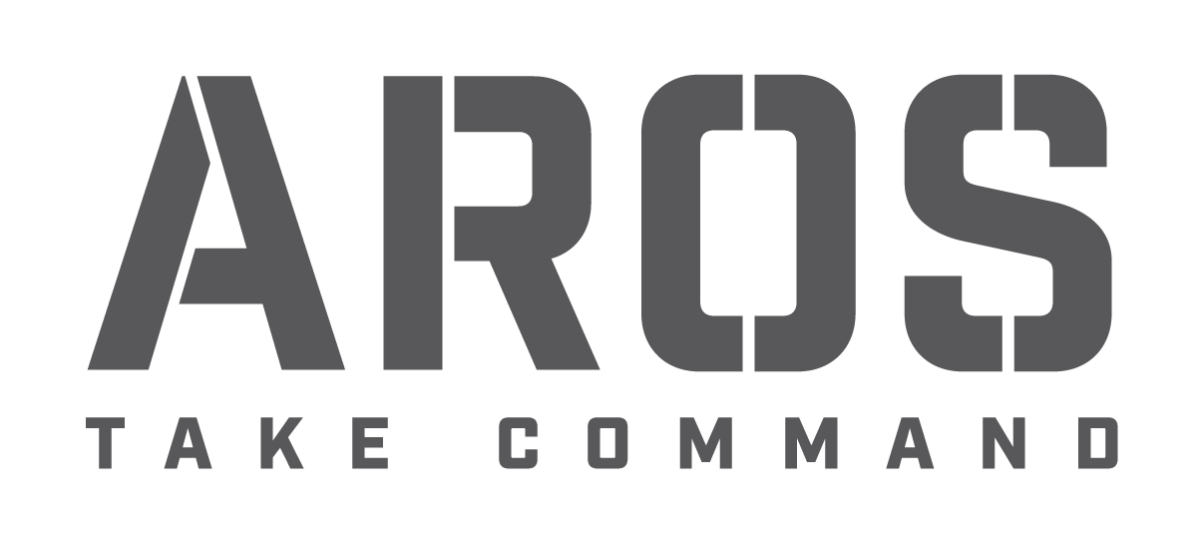
Austal has been delivering vessel systems integration for more than 30 years. The AROS (Autonomous and Remotely Operated Ships) Platform Autonomy Controller is the next step in delivering not only leading vessel automation, but true autonomy.
The AROS Controller, recently awarded with an Approval in Principle (AiP) by DNV, supervises all critical vessel information and enables full autonomy when connected to MARINELINK-Prime and a compatible Navigational Autonomy System.
The AROS Controller is a safety control system that provides a standardised interface between the vessel’s complex engineering systems and the navigational autonomy system. Built to comply with international industrial standards, it ensures safe vessel operation across both crewed and uncrewed scenarios.
AROS Console
The AROS Console enables the remote operation and tasking of autonomous and uncrewed assets, including the ability to administer engineering functions.
The console provides three main stations:
Designed to be fitted on new or existing vessels, the console facilitates crewed-uncrewed teaming, complimenting shore-based remote operations.
The AROS Console has been developed as a collaboration between Austal and Greenroom Robotics and reflects a key step towards delivering the necessary sovereign capability to support the introduction of autonomous and uncrewed assets directly to the war fighter.
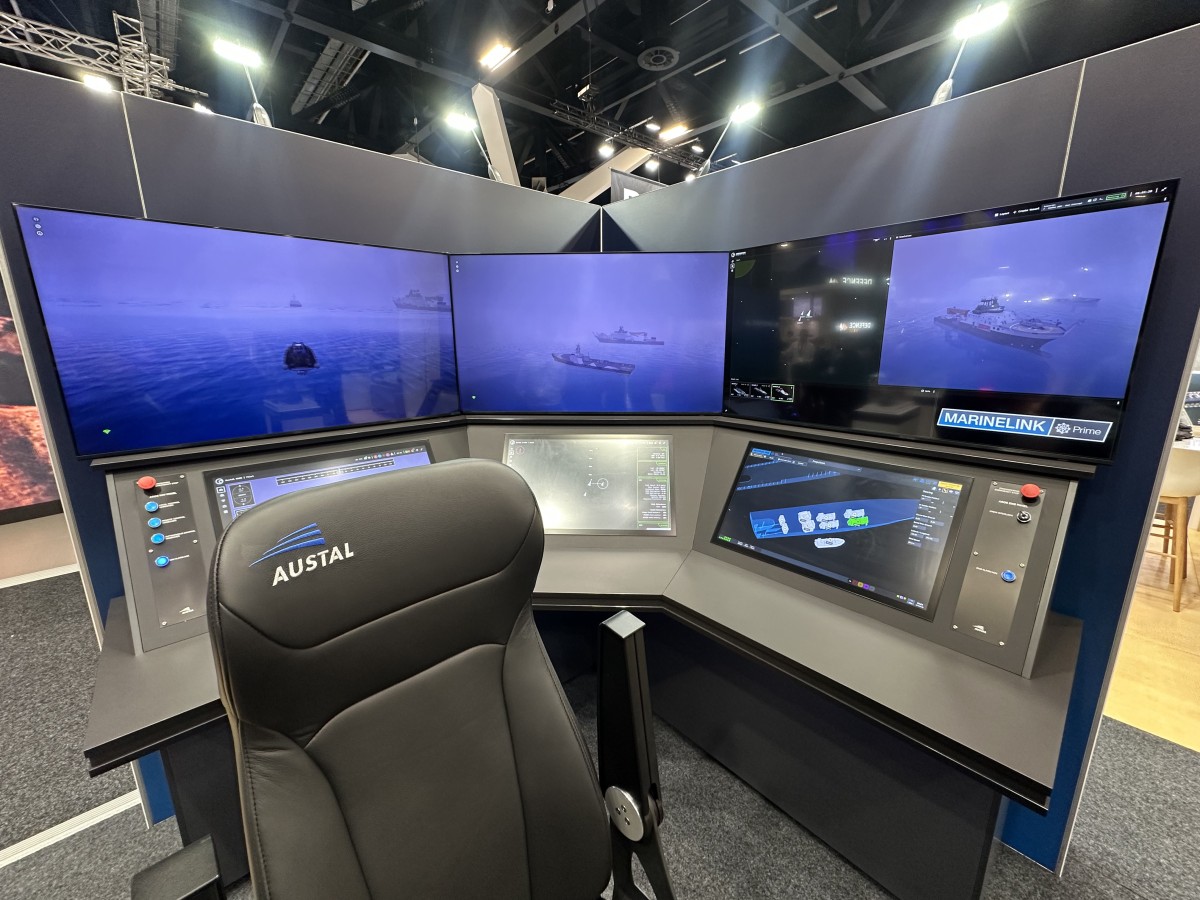
Learn more from Austal's Fergus Hudson and Luke Beumont Barrett in an interview by NAVAL NEWS at INDO PACIFIC 2025 here
PATROL BOAT AUTONOMY TRIAL
Austal worked together with Commonwealth and Industry partners, to lead the ambitious Patrol Boat Autonomy Trial (PBAT) over 2023-24. The trial coupled Austal’s experience as the expert designer and manufacturer of the Armidale Class Patrol Boat, with Greenroom Robotics 'GAMA' maritime autonomy technology to jointly develop a proof-of-concept demonstration of autonomous capability, guided by Trusted Autonomous Systems, for the Commonwealth of Australia.
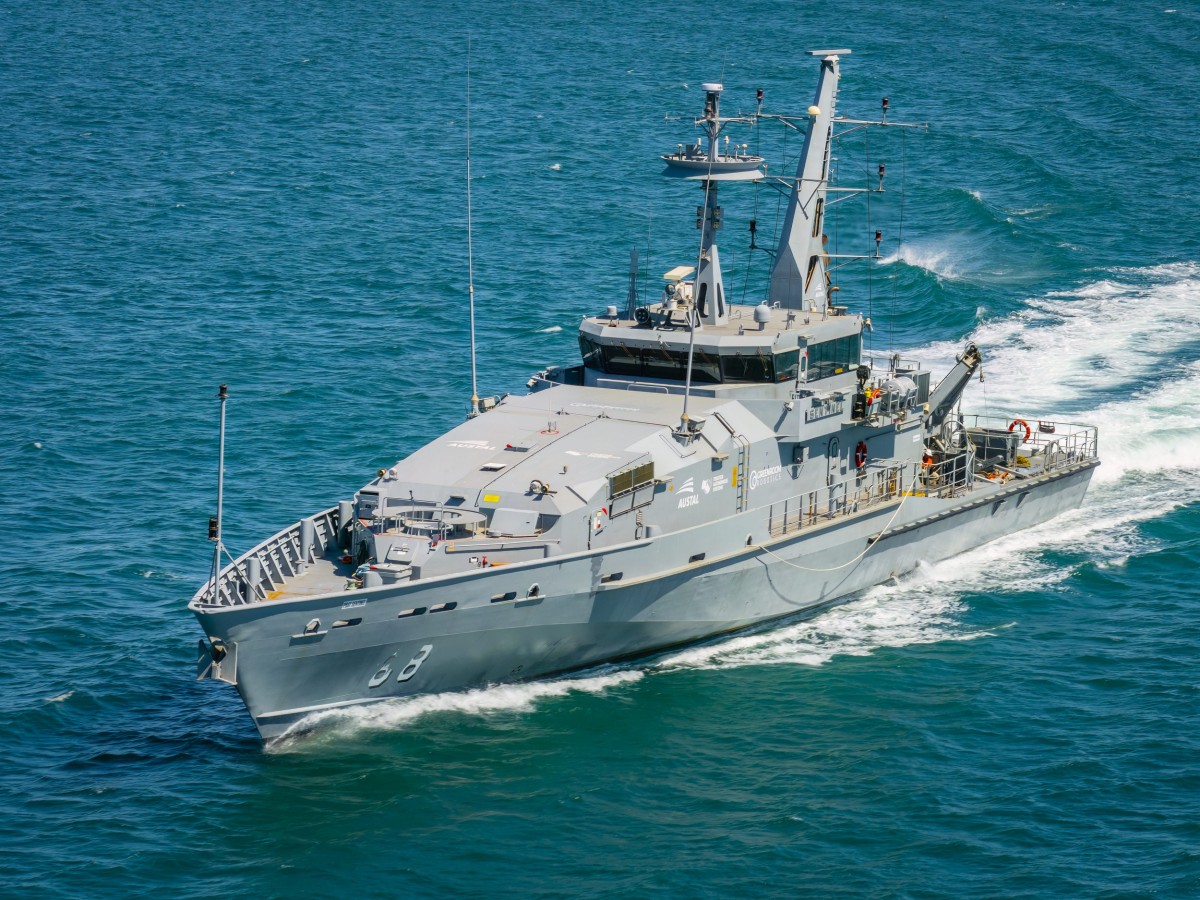
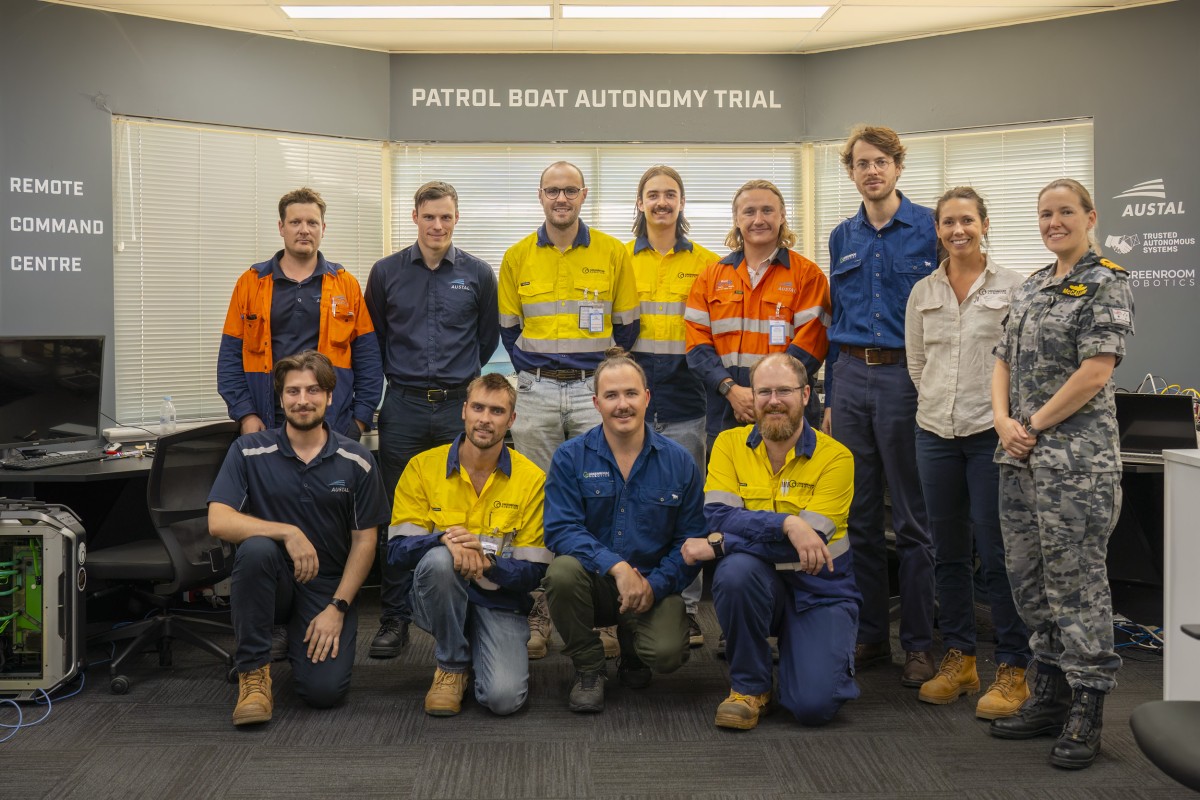
PBAT achieved:
- Significant progress on the concept of operations and the certification approach;
- Increased the understanding of fuel management, communication, and navigation systems to be made autonomous;
- Investigated and understand the sustained operation of shipboard mechanical systems without crew intervention, including systems redundancy and reliability to support operations at sea for extended periods;
- Provided input to long-term risk reduction for future naval projects, considering remote or autonomous vessels. This will be extended to other sensors and autonomous vehicles once the initial trial is compete; and
- Transferred lessons learned on the application of remote or autonomous systems to the RAN’s current fleet to potentially optimise crew workload. Remote and autonomous operation has the potential to reduce crew workload and increase operational safety by reducing human error.
AUSTAL USA AUTONOMOUS PROGRAMS
Teaming up with our U.S colleagues to leverage learning
VANGUARD (OUSV3)
The U.S. Navy’s newest Overlord Unmanned Surface Vessel Vanguard (OUSV3), was recently launched from Austal USA’s shipyard in Mobile, Alabama. Vanguard is the first USV for the Navy purpose-built for autonomous operations from the keel-up.
Vanguard is being jointly developed by a team led by Austal USA and L3Harris. Once outfitting and testing is completed, Vanguard will autonomously transit to San Diego, joining sister ships, OUSV2 Ranger and OUSV4 Mariner, as part of the Navy’s USV Division 1. USVDIV 1 is the Surface Navy organization responsible for the experimentation and tactical development of USVs. The unit also operates two additional USVs, Sea Hunter and Seahawk, which were developed separately from the Overlord program.
Above: Overlord Unmanned Surface Vessel Vanguard (OUSV3)
The Overlord program is managed by the Navy’s Program Executive Office for Unmanned and Small Combatants (PEO USC) and executed by PMS 406. The Overlord program has played a critical role in jumpstarting the Navy’s experimentation with USVs and accelerating Fleet knowledge and experience in using USVs in operations. The knowledge gained from Overlord plays an important role in the development and refining of requirements for the Navy’s future Large USV program.
The Program Office for Unmanned and Small Combatants (PEO USC) and the Unmanned Maritime Systems Program Office (PMS 406) lead the Navy’s efforts to develop, deliver and sustain capable and affordable unmanned maritime systems to meet Fleet requirements.
EPF13
Austal USA was awarded a $44 million autonomous design and construction contract by the U.S Navy, to deliver autonomous capabilities to the Expeditionary Fast Transport (EPF13), while retaining capability for manned operations.
This ship is a multi-use military platform capable of rapidly transporting troops and their equipment, supporting humanitarian relief or operational efforts, and can operate in shallow waters. This project will include installation of a perception and autonomy control suites, as well as several automation enhancements to the machinery plant, improving the hull, mechanical and electrical reliability while reducing the amount of personnel required for operations and maintenance at sea. The evolution of this platform and its deployed performance delivers unmatched value to the warfighter. Our expert Australian team aims to capitalise on any U.S learnings to accelerate capability into the Indo-Pacific region. The potential of the EPF to operate unmanned opens the door to a range of new missions ranging from logistics support, to mine warfare and strike operations.
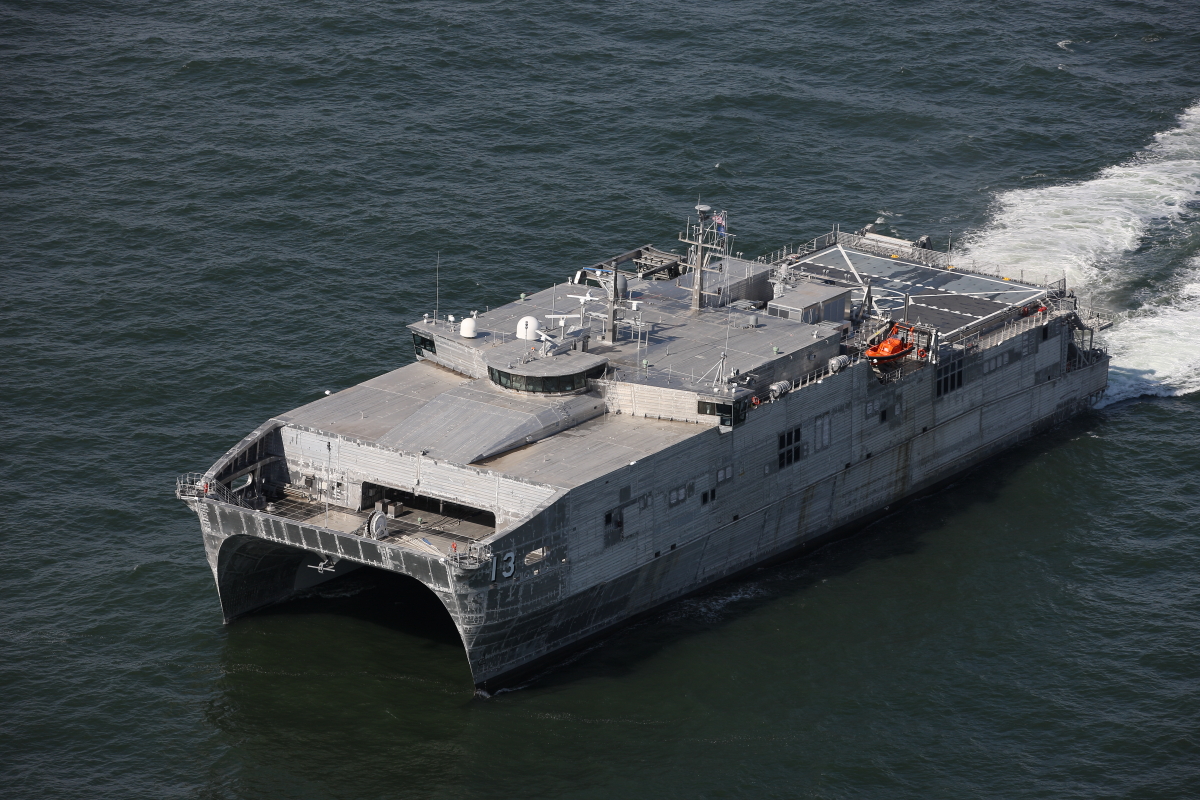
Above: USNS Apalachicola (EPF-13) with autonomous capability


